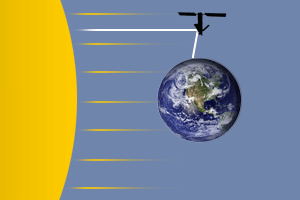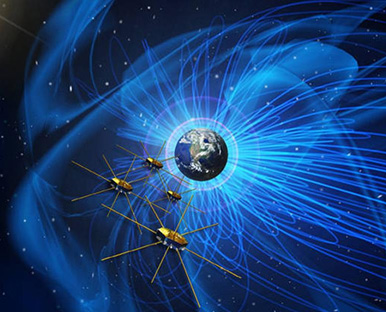Satellite flare, also known as satellite glint, is a satellite pass visible to the naked eye as a brief, bright “flare”. It is caused by the reflection toward the Earth below of sunlight incident on satellite surfaces such as solar panels and antennas (e.g., synthetic aperture radar). Streaks from satellite flare are a form of light pollution that can negatively impact ground-based astronomy and stargazing.
Many satellites flare with magnitudes bright enough to see with the unaided eye.






